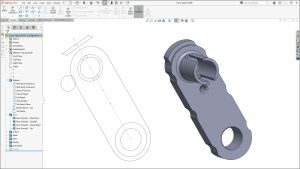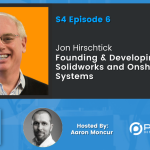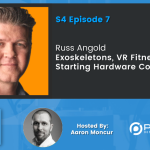Helping Engineers Grow With Goldilocks Challenges
In order to help those you lead grow, you have to push them…not to hard, not too soft, but just enough. If you push them too hard, they will be overwhelmed, get frustrated, and not learn. If you don’t push them hard enough it will be too easy and there will be nothing for them to learn. But if you can find the right balance in between those extremes that stretches them just the right amount, they will blossom. I call the challenges in that zone “Goldilocks Challenges”.

Growing is painful – there’s no way around that. Consider the analogy of muscle growth: when our muscles grow, they do so only after being broken down. Anyone who has been to the gym can attest to the fact that it hurts when your muscles get broken down. It takes effort, and requires placing significant stress on the muscle. What follows, however, is predictable: the muscle grows – it gets stronger and can handle greater loads. Growth as an engineer (and as people in general) is the same way. However, if you place too much stress on a muscle (or on people) the muscle will get broken down so completely that you can’t use it for a long time, and this is not an effective way to build muscle (or people).

I’ve been doing Brazilian Jiu Jitsu for several years. It’s one of the best sports in which I’ve ever participated, and one of the hardest. Currently I’m a blue belt. The next belt in the progression of skill is purple, then brown, then finally black. Occasionally I’ll roll with a black belt during class. Usually they’re amazingly patient and helpful as they crush me with little to no effort. Occasionally one will forget how exponentially inferior I am in terms of skill and just thrash me. This is no problem, it’s all part of the game. But in these situations, I don’t learn anything, because the gap between their capability and mine is simply too great. The challenge they represent against my current abilities is beyond the Goldilocks zone.

Several years ago I taught a small group of students a framework for using CAD we call Resilient CAD Modeling (RCM). Even for experienced CAD designers the principles of RCM are new and can be tough to master right away, but these were students who had little experience with CAD to begin with. And while my experience using RCM was extensive, my experience teaching it was limited at best. I remember all of us, the class and myself, feeling frustrated as I struggled to teach and they struggled to learn. My mistake, I learned, was I was asking them to take too big a step all at once in the lessons I had prepared. Once I realized this and started challenging them with smaller, simpler lessons, they began catching on and the experience became rewarding for all of us.
As we lead other engineers, it can be difficult to know where that Goldilocks zone is. How do we know if we are asking too little or too much of our team? The answer lies in a combination of observation and frequent communication with the individuals we’re leading. Depending on the individual and the situation, I have found it helpful to meet with engineers on my team every few days or at a minimum once each week to check in. I ask them how their stress level is, what they’re learning, where they’re struggling, and similar questions. In parallel, I observe them (not in a creepy stalker way) by being in the office when they are and simply noticing their actions (it’s really helpful to be there in person with your engineers for this). Are they getting stuck somewhere? Are they communicating effectively with others? Are they anxious, or projecting confidence?
Sometimes engineers are so committed to their own growth that they don’t like to admit they’re struggling. This is human nature and completely normal and understandable, particularly for those who are especially driven. For this reason it is important for us as engineering leaders to make sure our team feels (psychologically) safe sharing when they need help. A good way to do this is to set that expectation up front – you could say something like this: “hey, I’m going to ask you to do something that might be really tough at first. I want you to struggle through it as best you can, but if you get to a point where you’re just spinning your wheels or feeling overwhelmed please tell me so I can help you. This will be a new and challenging effort for you so it’s completely fine if you end up needing help, and if that’s the case I’ll be more than happy to give it and it won’t mean anything bad for you.”
Doing hard things is how we grow. As leaders of engineers we need to give our teams the gift of Goldilocks challenges. Engage your team in frequent dialogue about how they’re feeling. Observe them as they work (casually…almost passively; don’t be overbearing). Let’s not step in right away just because they are struggling…struggle is good: not too much, not too little, but just the right amount. There will be good days and bad, and as leaders we’ll probably screw up ourselves here and there, but at the end of the day we’ll end up with more capable engineering teams and a more joyful work experience together.



